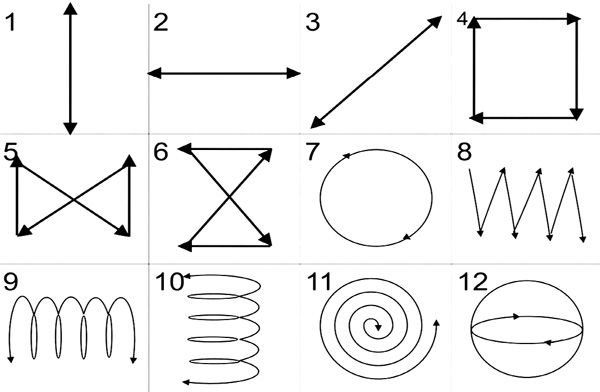How to Restore Eyesight
What is laser vision correction
Wearing glasses or contact lenses and dreaming of seeing a clear picture without "crutches for the eyes"? You are not alone. About a third of the world's people suffer from visual acuity problems, wishing they could regain it and see the world in a new way. Some problems with refraction caused by overstrain are easily correctable and can be treated at home. But serious myopia, astigmatism, or hyperopia can only be corrected by a qualified surgeon who will choose an effective method of treatment.

Techniques for Restoring Eyesight at Home
The high prevalence of myopia and hyperopia among patients of various ages leads ophthalmologists to look for new ways of eliminating them quickly, effectively and painlessly. Every day hundreds of people are trying different techniques to improve their vision, hoping to get rid of wearing glasses and contact lenses. The most common are the following refractive error treatment methods:
Special sets of exercises
If you often visit an ophthalmologist, you are probably familiar with corrective exercises for the eyes. It is used for the prevention of visual impairment, recovery after surgery, and the elimination of myopia. As a rule, such a complex includes exercises with moving the gaze up, down, sideways, in a circle, etc. These exercises have a good effect with mild degrees of myopia, with spasm of accommodation due to prolonged eye strain, with frequent work on the computer. With more serious disorders the effect will be less noticeable.
Bates Method
Also based on eye "training." It consists of alternating passive and active exercises. The most famous among the first is palming, the purpose of which is to relax the organs of vision as much as possible, limiting access to light, to achieve complete serenity.
To do this, the eyes are closed for a few minutes with the palms of your hands, until instead of spots of light, a black field appears in front of them. Dynamic exercises are based on classical gymnastics using visual turns, rotations, drawing with the eyes, and blinking. Bates also suggested using the energy of the sun (the "solarization" technique) and pirate glasses in which one side is covered with black paper or cloth to treat myopia.

Apparatus method
Allows to stop the progression of myopia and hyperopia, improve visual acuity, and sometimes restore it completely. It is based on the use of special ophthalmic simulators, which:
Relieve tension on the eye muscles;
Improve blood flow in the vision area;
Help to recover quickly after surgery;
Eliminate spasm at high visual stress.
Orthokeratology hard overnight lenses
These allow to improve eyesight in a short time without surgery, and to stop progressing myopia. Can be used for children older than 7 years old and up to 50-60 years old in adults. They help in the early stages of myopia (up to -10 diopters), astigmatism (up to -1.75), hyperopia (up to +4 diopters), correcting the cornea to the correct form. Unlike classic contact lenses that are worn during the day as an alternative to glasses, therapeutic lenses are put on strictly at night. After waking up, the wearer has good vision and is able to get along without vision aids during the day. The disadvantages are the necessity for a prolonged use of ortholenses, discomfort while putting them on, difficulty in fitting, and restrictions.
Medicinal and folk therapy
For the treatment and prevention of refractive disorders, special drops may be prescribed, which help restore the eyes after injuries, improve the condition of the retina, relieve spasm of the visual muscles, and improve blood circulation. Atropine, Galidor, and Stulna drops are used for this purpose.
As an alternative to drugs, people use strong black tea with honey (a drop of each is enough for 2 weeks), raspberry infusion (applied to the eye), carrot juice (drunk on an empty stomach) and contrast baths. But they do not have any significant effect and must be used with caution.
Laser correction and implantation surgery
The most progressive methods eliminate even strong refractive errors, prevent the development of age-related changes in vision, and allow for complete abandonment of wearing glasses.
Specialists in ophthalmology attach great importance to correcting refractive disorders through proper nutrition with an emphasis on vitamins A, B, C, E, trace elements selenium and zinc, a healthy lifestyle and a positive attitude. A good effect in the treatment of the eyes gives a massage, alternating visual tension and rest, special complexes based on blueberries, natural carotenoids.
|